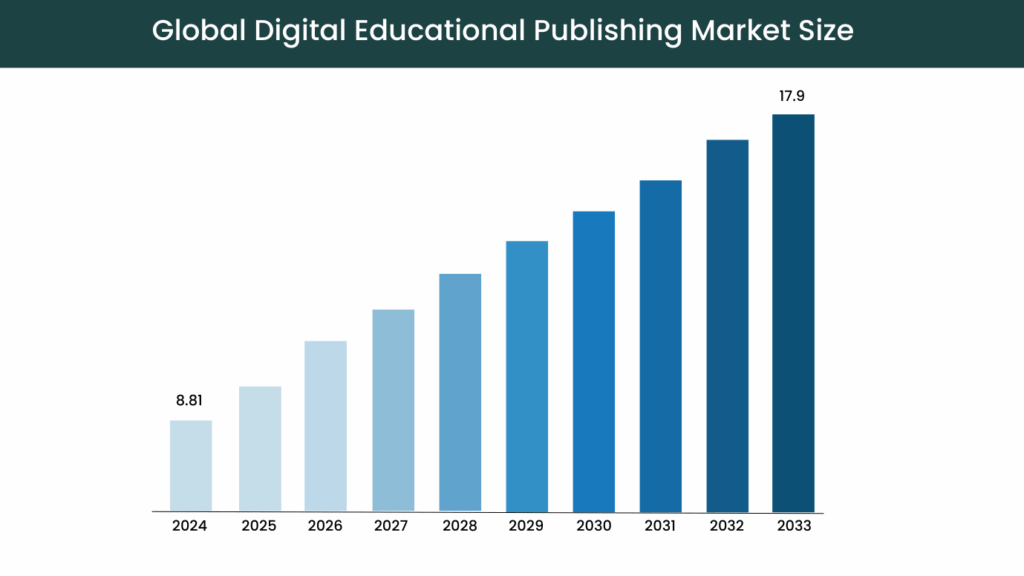- Services
- Discovery & Intelligence Services
- Publication Support Services
- Sample Work
Publication Support Service
- Editing & Translation
-
Editing and Translation Services
- Sample Work
Editing and Translation Service
-
- Research Services
- Sample Work
Research Services
- Physician Writing
- Sample Work
Physician Writing Service
- Statistical Analyses
- Sample Work
Statistical Analyses
- Data Collection
- AI and ML Services
- Medical Writing
- Sample Work
Medical Writing
- Research Impact
- Sample Work
Research Impact
- Medical & Scientific Communication
- Medico Legal Services
- Educational Content
- Industries
- Subjects
- About Us
- Academy
- Insights
- Get in Touch
- Services
- Discovery & Intelligence Services
- Publication Support Services
- Sample Work
Publication Support Service
- Editing & Translation
-
Editing and Translation Services
- Sample Work
Editing and Translation Service
-
- Research Services
- Sample Work
Research Services
- Physician Writing
- Sample Work
Physician Writing Service
- Statistical Analyses
- Sample Work
Statistical Analyses
- Data Collection
- AI and ML Services
- Medical Writing
- Sample Work
Medical Writing
- Research Impact
- Sample Work
Research Impact
- Medical & Scientific Communication
- Medico Legal Services
- Educational Content
- Industries
- Subjects
- About Us
- Academy
- Insights
- Get in Touch

- Services
- Discovery & Intelligence Services
- Publication Support Services
- Sample Work
Publication Support Service
- Editing & Translation
-
Editing and Translation Services
- Sample Work
Editing and Translation Service
-
- Research Services
- Sample Work
Research Services
- Physician Writing
- Sample Work
Physician Writing Service
- Statistical Analyses
- Sample Work
Statistical Analyses
- Data Collection
- AI and ML Services
- Medical Writing
- Sample Work
Medical Writing
- Research Impact
- Sample Work
Research Impact
- Medical & Scientific Communication
- Medico Legal Services
- Educational Content
- Industries
- Subjects
- About Us
- Academy
- Insights
- Get in Touch

May 2025 | Source: Sage Publishing
SAGE Publications has implemented a response to reviewers template to take the manuscript revision process to the next level. As authors prepare and generate a structured response to peer review, the expectation is that this template will enhance both the quality and clarity of scholarship.
Industry Trends and Forecasts in Academic Publishing: Digital Transformation & Research Insights
- Home
- Insights
- News
- Industry Trends and Forecasts in Academic Publishing: Digital Transformation & Research Insights
Industry Trends and Forecasts
- Digital Transformation and Market Growth
- Technological Innovations
- Evolving Reader Behaviours and Content Consumption
- Lambert Academic Publishing: Navigating the Changing Landscape
- Open Access and Collaborative Models
- Challenges and Opportunities
- What This Means for Researchers
- How Pubrica Supports These Changes
- Pubrica’s Viewpoint
- Conclusion
Interesting topics


Industry Trends and Forecasts in Academic Publishing: Digital Transformation & Research Insights
Table of Content
- 1. Digital Transformation and Market Growth
- 2. Technological Innovations
- 3. Evolving Reader Behaviours and Content Consumption
- 4. Lambert Academic Publishing: Navigating the Changing Landscape
- 5. Open Access and Collaborative Models
- 6. Challenges and Opportunities
- 7. What This Means for Researchers
- 8. How Pubrica Supports These Changes
- 9. Pubrica’s Viewpoint
- 10. Conclusion
August 2025 | Source: LAMBERT Academic Publishing
There are many shifts occurring in the academic publishing landscape because of technological shifts and shifts in reader habits. Analysts anticipate persistent growth of this business, with a shift in focus to digital resources and an expansion of academic resources that meet the needs of this changing market.
Digital Transformation and Market Growth
The global digital publishing market is booming. In 2024, the market size was $97.36 billion and is forecasted to grow to $248 billion by 2034, which is a 9.80% CAGR during the forecast period from 2025 to 2034. Meanwhile, the digital educational publishing market size in 2024 was $8.81 billion and is projected to hit $17.9 billion in 2033, which is an 8.2% CAGR from 2025 – 2033. [1]

This expansion is attributed to the unyielding transitions from print to digital media, the explosive adoption of smartphones, growing infrastructure/capacity on networks, and the improvement of the digital publishing market in both advanced and developing economies.
Technological Innovations
Here’s an overview of the most impactful developments
| Artificial Intelligence (AI) | AI is changing the landscape for content curation, personalized recommendations, and predictive analytics, allowing publishers to fine-tune to the reading preferences of each reader and boost user engagement |
|---|---|
| Blockchain | Publishers are looking at blockchain technology to ensure transparency, security, and efficiency in the publishing process with respect to copyright management and peer review processes |
| Augmented Reality (AR) and Virtual Reality (VR) | AR and VR are being utilized by academic publishing sectors to create immersive learning experiences, especially for medicine and engineering.[2] |
These principles represent the journal’s ethos surrounding intellectual accountability, viewpoint diversity, and fair editorial practices while providing an indirect challenge to traditional scientific publishing (1).
Evolving Reader Behaviours and Content Consumption
- Readers don’t individually consume content, and they are now showing a shift from physical print to digital forms of content. The demand for e-books and audiobooks has increased greatly with the ease of access and digital platforms, as readers are consuming their stories in digital form. Publishers recognize this change and are striving to change their practices to appeal to the new reader preferences.
- Readers are also contributing to encouraging diversity and inclusivity in published material, as they are now looking for content, stories, and personal experiences from a variety of perspectives, and a diversification of published materials that showcase a range of different perspectives.[3]
Lambert Academic Publishing: Navigating the Changing Landscape
Lambert Academic Publishing (LAP) is a German press that publishes academic literature. In 2025, LAP is undergoing significant transitions due to technology development and changing reader behaviours. LAP is reorganizing its promotion of academic content to be more digital-focused and is expanding its significant academic product offerings in response to the changing needs of the marketplace.[4]
Open Access and Collaborative Models
The trend is clear – open access publishing is growing, with institutions and funding bodies calling for even more open access to research outputs. Springer Nature reported that, in 2024, open access journals comprised 50% of their primary research article publishing, resulting in a spike in revenue forecast for 2025.
Challenges and Opportunities
Even with advancements and expanded growth, the academic publishing industry has encountered several challenges. The vast number of published research articles, especially because publishing has become a publish or perish setting, has created problems around the quality and trustworthiness of research papers. Professionals warn that the academic community needs to pay attention to the increasing number of questionable studies permeating the academic space and leading to the overall erosion of quality in scholarly work.[4]
What This Means for Researchers
Industry Trends Forecasts give researchers projections for developments, technologies, and market movement that are on the horizon. These forecasts can help researchers consider opportunities, plan strategically, and make informed decisions based on evidence. Forecasts will help to direct a research agenda by identifying high-growth potential areas. They provide context and an informed tone for comparison and innovation.
How Pubrica Supports These Changes
Pubrica empowers researchers with data-based support, market evaluation, and evidence-based research support on Industry Trends Forecasts. Research outputs are relevant, strategically positioned, and responsive to industry and technology trends. Therefore, our services help researchers recognize emerging opportunities, reconsider research focus, and develop manuscripts consistent with industry and projected trends.
Pubrica’s Viewpoint
These forecasts illustrate dynamic research priorities, new research methodologies, and innovations, and offer guidance in aligning research with developments in both the market and academia. The forecasts provided can also assist in planning strategically for future impact on research outcomes.
Conclusion
The academic publishing industry is in a transitional period with technological advances and changing reader behaviours leading to significant change. Publishers such as Lambert Academic Publishing are responding to changes by adopting digital formats, promoting diversity, and adopting sustainable practices. Of course, there are continuing challenges facing the industry, such as monitoring the quality of the research published and dealing with the challenges presented through addressing open access publishing. Certainly, these challenges require ongoing attention and innovation as the industry continues to evolve.
Ready to align your research with emerging academic publishing trends? Partner with Pubrica for expert guidance on manuscript development, strategic publishing, and industry-focused insights to boost your research impact.
References
- Digital educational publishing market size, share – 2033. (n.d.). Businessresearchinsights.com. Retrieved August 25, 2025, from https://www.businessresearchinsights.com/market-reports/digital-educational-publishing-market-102150?utm_sourcem
- com. Accessed August 25, 2025. https://blockthrough.com/blog/top-10-digital-publishing-trends-for-2024/?utm_source
- Publishing market to grow by USD 18.9 million (2025-2029), driven by demand for diverse content, Report highlights AI-powered market evolution – technavio. Cision PR Newswire. January 21, 2025. Accessed August 25, 2025. https://www.prnewswire.com/news-releases/publishing-market-to-grow-by-usd-18-9-million-2025-2029-driven-by-demand-for-diverse-content-report-highlights-ai-powered-market-evolution—technavio-302356386.html?utm_source
- Lap-publishing.com. Accessed August 25, 2025. https://blog.lap-publishing.com/current-trends-in-academic-publishing-you-should-know/?utm_source







